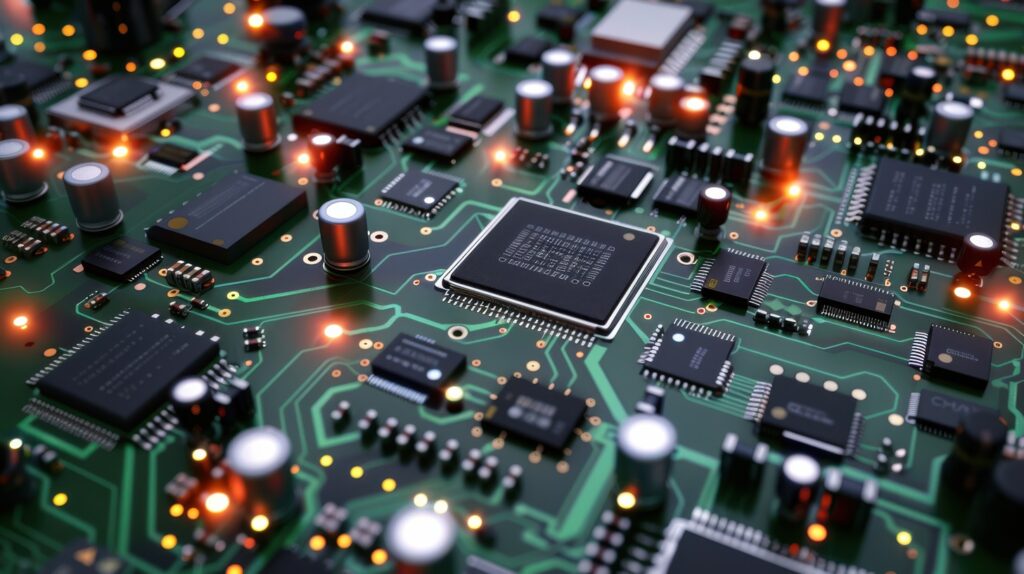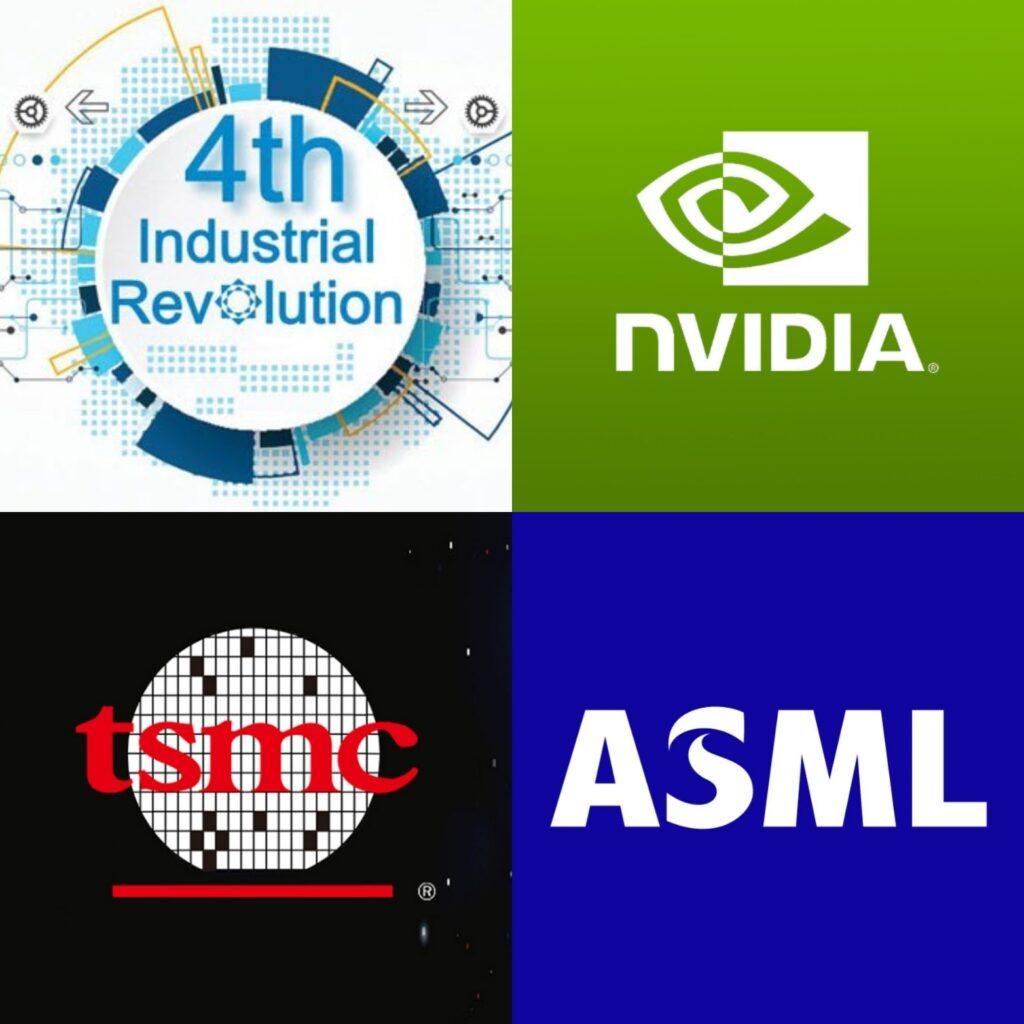NVIDIA, Intel, and ASML are major players in the semiconductor and technology industry, but their roles and primary use cases differ significantly. Here’s a breakdown of how each company contributes to different fields

NVIDIA
Primary Focus: Graphics Processing Units (GPUs), AI, and high-performance computing.
Key Use Cases:
- Gaming: NVIDIA is widely known for its GeForce GPUs, which dominate the gaming market, providing high-quality graphics and real-time rendering.
- Artificial Intelligence (AI) and Machine Learning (ML): NVIDIA’s CUDA platform and Tensor Cores are widely used for AI training, deep learning, and neural network applications. Their GPUs are essential in data centers for AI research.
- Autonomous Vehicles: NVIDIA’s Drive platform is a major player in the autonomous vehicle industry, offering AI-driven computing platforms for self-driving cars.
- High-Performance Computing (HPC): Used in supercomputing, NVIDIA GPUs accelerate scientific research, simulations, and complex computational tasks across industries.
- Healthcare: NVIDIA GPUs are used for medical imaging, drug discovery, and AI-driven diagnostics, improving the speed and accuracy of healthcare research.
Intel
Primary Focus: Central Processing Units (CPUs), semiconductor manufacturing, and integrated technology solutions.
Key Use Cases:
- Personal Computing: Intel is a global leader in CPUs, powering a vast range of laptops, desktops, and workstations. Their Core and Xeon processors are the backbone of consumer and business devices.
- Data Centers: Intel’s Xeon processors are widely used in cloud infrastructure, enterprise servers, and data centers, offering scalable performance for data processing and storage.
- 5G Networks: Intel is involved in developing technology for 5G infrastructure and networks, providing components that drive the communication networks of the future.
- Internet of Things (IoT): Intel processors are embedded in smart devices, IoT systems, and industrial automation applications, enabling connected solutions for homes, cities, and businesses.
- Autonomous Systems: Intel’s Mobileye division focuses on computer vision and driver-assistance technologies for autonomous vehicles, competing with NVIDIA in the self-driving sector.

ASML
Primary Focus: Lithography machines for semiconductor manufacturing.
Key Use Cases:
- Semiconductor Manufacturing: ASML provides extreme ultraviolet (EUV) lithography systems, which are critical for producing the most advanced and smallest chips in the world. These chips power everything from smartphones to supercomputers.
- Chip Fabrication: ASML’s machines are essential for chipmakers like TSMC, Samsung, and Intel to produce cutting-edge chips. They enable Moore’s Law to continue by allowing manufacturers to fit more transistors onto a single chip.
- Advanced Technology Nodes: ASML’s technology is used to create the most advanced chips (5nm, 3nm, and below) for AI, 5G, quantum computing, and other cutting-edge applications.
- R&D in Semiconductor Industry: ASML also plays a role in research and development for future generations of semiconductors, helping to push forward innovation in chip design and manufacturing techniques.
Key Differentiators
- NVIDIA is primarily focused on GPU technologies and AI-driven applications, excelling in high-performance computing, AI, and gaming.
- Intel dominates in CPU technologies and data center infrastructure, covering a wide range of computing needs from consumer electronics to enterprise solutions.
- ASML is unique in providing the most advanced semiconductor manufacturing equipment, specializing in lithography systems that are critical to producing cutting-edge chips for global tech industries.
JobsReach 
JobsReach can significantly enhance the visibility and engagement of job opportunities by utilizing social media and AI to actively attract potential candidates. Here’s how
- Relevant Job Opportunities (based on current trends):
- Aviation Industry Jobs:
- Aircraft Maintenance Engineers (AME)
- Pilots (Commercial and Private)
- Air Traffic Controllers
- Aerospace Engineers
- Avionics Technicians
- Flight Attendants
- Ground Crew and Ramp Agents
- Aviation Safety Inspectors
- Flight Operations Managers
- Airport Operations Staff
- Tech & IT Roles:
- AI & Machine Learning Engineers
- Cloud Computing Specialists
- Data Scientists & Analysts
- Software Developers (Full Stack, Backend, Frontend)
- Cybersecurity Experts
- Healthcare Roles:
- Registered Nurses (RNs)
- Healthcare Administrators
- Medical Technologists
- Telehealth Coordinators
- Clinical Research Associates
How JobsReach Can Promote Jobs Across Major Industries via Social Media and AI
Social Media Campaigns for Key Industries:
- Targeted Advertising: Develop specialized campaigns on platforms like Instagram, Twitter, Pinterest, and Facebook, TikTok, YouTube and Linked In and many other channels and forums focusing on professionals across major industries such as aviation, healthcare, IT, and more. For example, tailor ads for roles like aircraft engineers, registered nurses, or software developers, ensuring they reach the right talent pool.
- Industry-Specific Content: Share engaging content such as behind-the-scenes videos, job tips, and industry insights to attract talent across various fields. Use platforms like YouTube and Twitter to showcase aviation, healthcare, IT, and other career paths, building interest and engagement.
- Job Posting Automation: Regularly post job opportunities with detailed descriptions and application links for roles in aviation, healthcare, tech, and other sectors across social media channels using tools like Buffer or Hootsuite. Automation helps maintain consistency and ensures broad reach.
By leveraging a combination of social media strategies and AI-powered personalization, JobsReach can actively connect professionals across diverse industries with relevant job opportunities, optimizing reach and engagement to attract the right candidates.
Leave a Reply